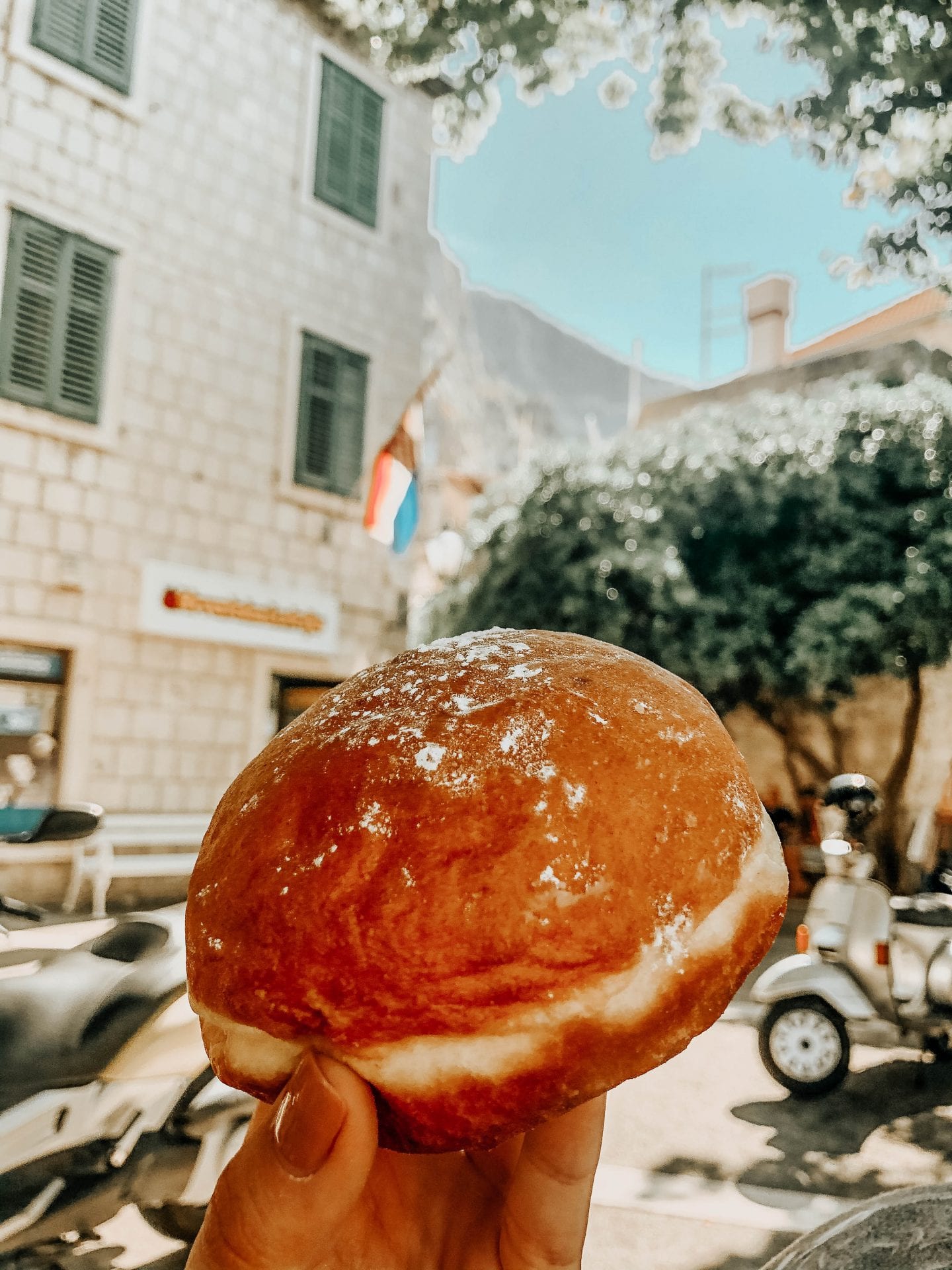
Last Updated on February 23, 2022 by Michela
Grocery shopping in Croatia… probably not the first thing that crosses your mind when planning a trip to this Mediterranean gem.
However, if you’re DIYing your trip and staying as budget-friendly as possible, you’re going to need to know your way around a Croatian supermarket. There are so many differences grocery shopping in Croatia – or anywhere in Europe for that matter – in comparison to North America. Fortunately, I’m jotting down everything I remember about the supermarket experience to help you easily navigate grocery shopping in Croatia.
As I mentioned, grocery shopping is not the first thing that comes to mind when trip-planning in general. However, it’s actually incredibly useful information to know.
Whether you are road-tripping and cooking for yourself along the way or you forgot to pack your toothbrush, you’re probably going to end up in a supermarket no matter where you are traveling to.
The Types of Grocery Stores and Supermarkets in Croatia
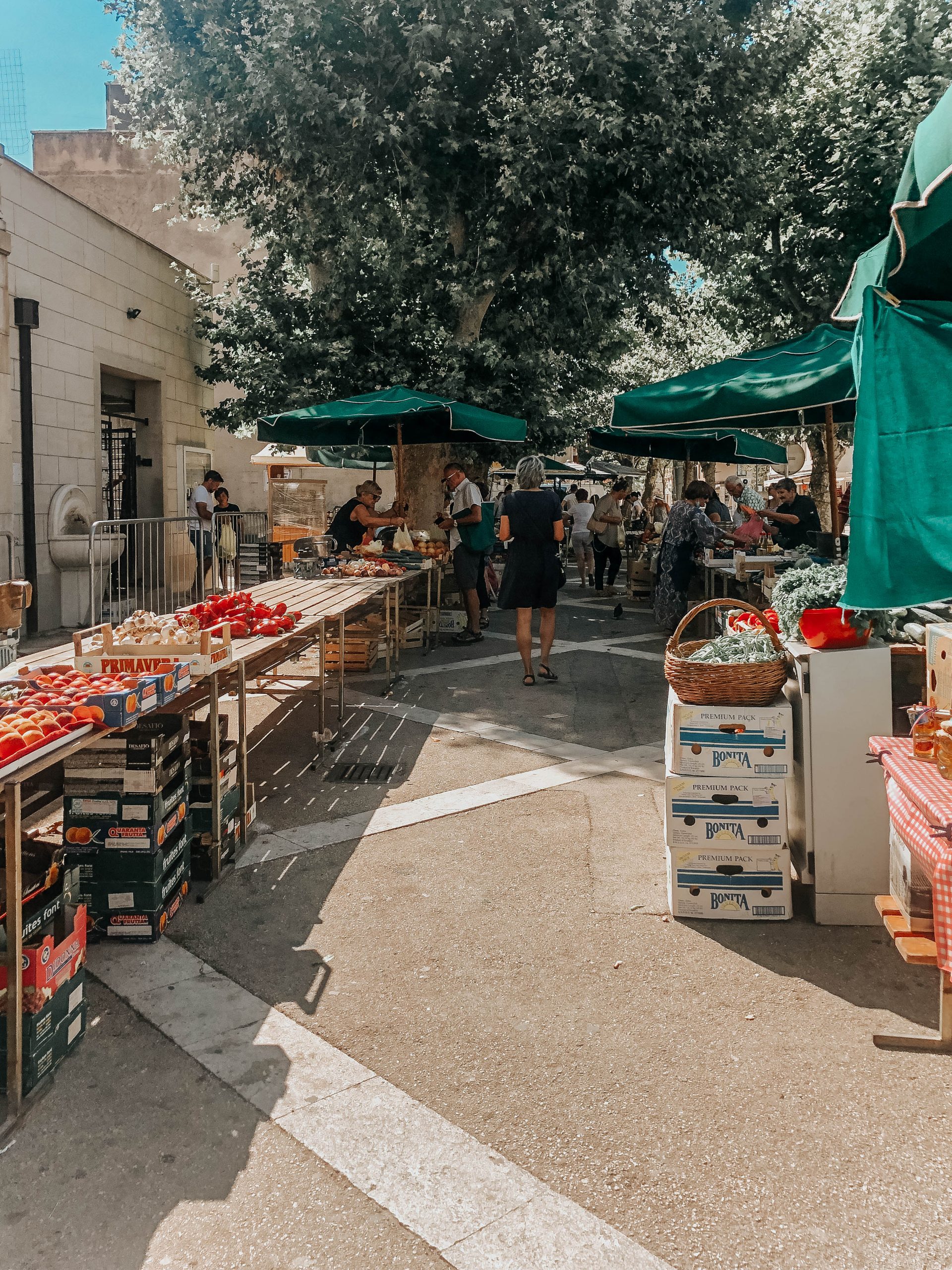
Croatia has different kinds of supermarkets that vary in size, hours of operation, and products available.
In the city centers, you can find a lot of small corner store markets, like SPAR or Studenac. These places usually have essentials, but limited produce and meat. They also usually have limited hours.
Konzum and Lidl are the bigger grocery stores in Croatia and they are usually outside the city center. You’ll probably have to drive to them.
Farmers’ markets (like the one pictured above) are also common in certain areas, but can be hard to stumble upon if you’re not a local! However, if you get the chance to visit one, it’s a perfect place to understand the culture and diet of Croatians.
Research the Physical Locations of Supermarkets Where You Are Staying
I’m a big fan of researching and planning as much as I can when going to a new place. I try to think of all the different things I will need, like something from a supermarket, and become familiar with the area I’m staying in before I arrive.
Like I mentioned previously, larger supermarkets are usually outside city centers, so they may not be walkable. You’ll then have to research public transportation if you won’t have your own car.
Small supermarkets are widely available in cities, but they may have limited selection and hours of operation. Map out these locations from your AirBnB or hotel so you know exactly where to go!
Have a Coin to Use a Shopping Cart
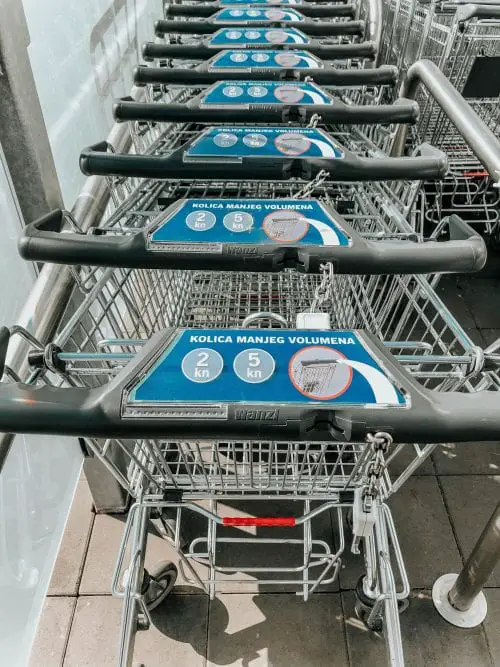
One of the strangest things about grocery shopping in Croatia as an American was using a coin to unlock a shopping cart.
At the larger supermarkets, like Lidl and Konzum, the shopping carts are usually outside under an awning in the parking lot. You’ll need a 2 or 5 kuna coin to insert into a slot on the cart that unlocks it from the rest of the carts!
Be Aware of A Few Croatian Words – Or Be Ready to Experiment!
Croatian is a Slavic language, so even though I know Italian and English, neither of those language families helped me out in Croatia! So, when it comes to buying food in Croatia, I recommend learning a few words for items you know you want.
The other option is to have a translator app already downloaded onto your phone so you can check quickly what you are buying.
Some items will be easy to identify (a potato still looks like a potato in a foreign country!) However, items like meat or sauces can be confusing!
Weigh Your Own Produce
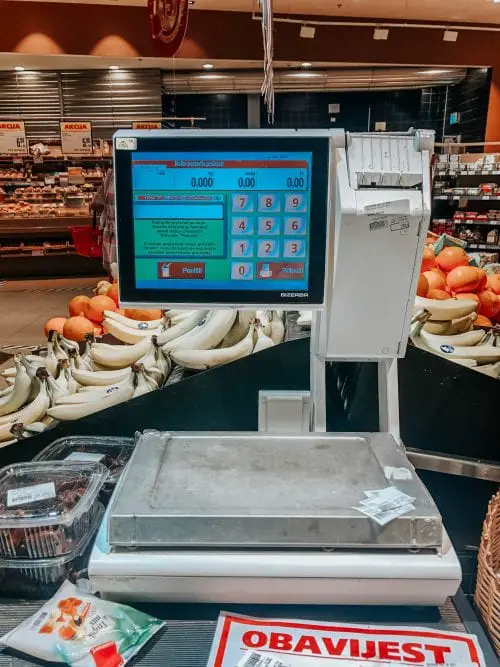
Another one of the strangest things about grocery shopping in Croatia (and Europe in general) is that you have to weigh your own produce.
In the produce section, you’ll see a tablet and scale where you enter the produce number and weigh it. It prints out a sticker that you put on the bag.
It’s not difficult, but it’s definitely different! Don’t go up to the cashier with produce you haven’t weighed – they’ll know you are a tourist!
Shop With a Currency Converter App
Croatia uses the Kuna as its currency. At first glance, everything looks expensive. But one US dollar, for example, is worth 6.28 Kuna!
It can be really hard doing the math in your head to figure out how much something costs in Kuna to your own currency. I recommend downloading a currency converter app on your phone so it’s easily accessible while you shop.
Grocery Bags Cost Money
This tip might not be life-changing, but it is something unique about grocery shopping in Croatia! You are charged around 10 cents per grocery bag that you use.
If you’re being the most budget-friendly traveler ever, opt to bring your own paper or fabric bag to the grocery store. Oh, and check out these budget secrets to help save you money while traveling.
Final Thoughts
All in all, grocery shopping in Croatia, or in any foreign country, turns out to be it’s own mini adventure! It’s a mundane but unique way to experience the local culture and see how normal people live their lives in a place that is unique to you.
For more Croatia travel planning resources, check out these guides:
Tell me how you fared grocery shopping in Croatia, or what the most surprising thing on this list is!
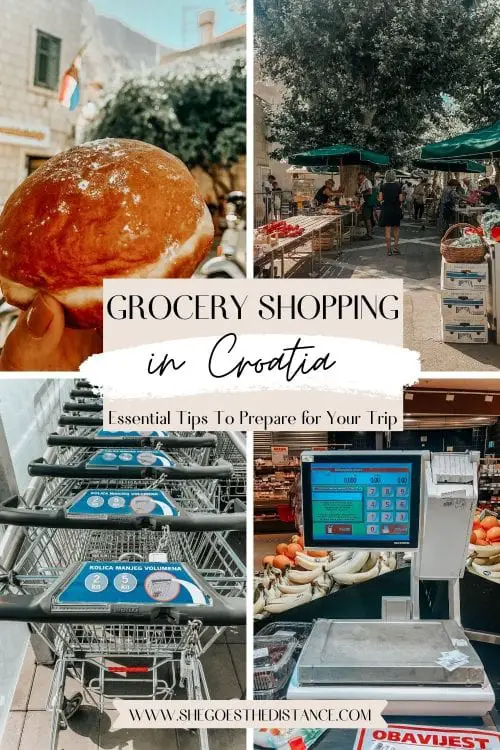
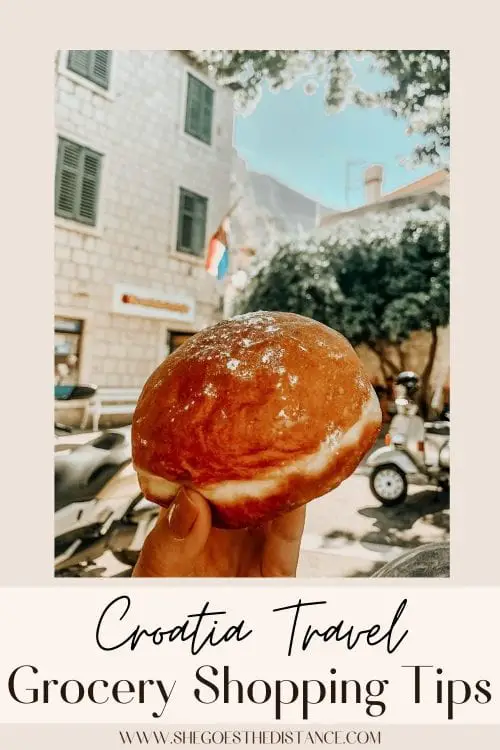
I hope this is just one extra step that gets you excited for your trip to Croatia! And if you’re in the grocery store right now desperately looking up how to navigate this part of Croatia travel – I hope this has been a helpful resource!
XOXO
Michela

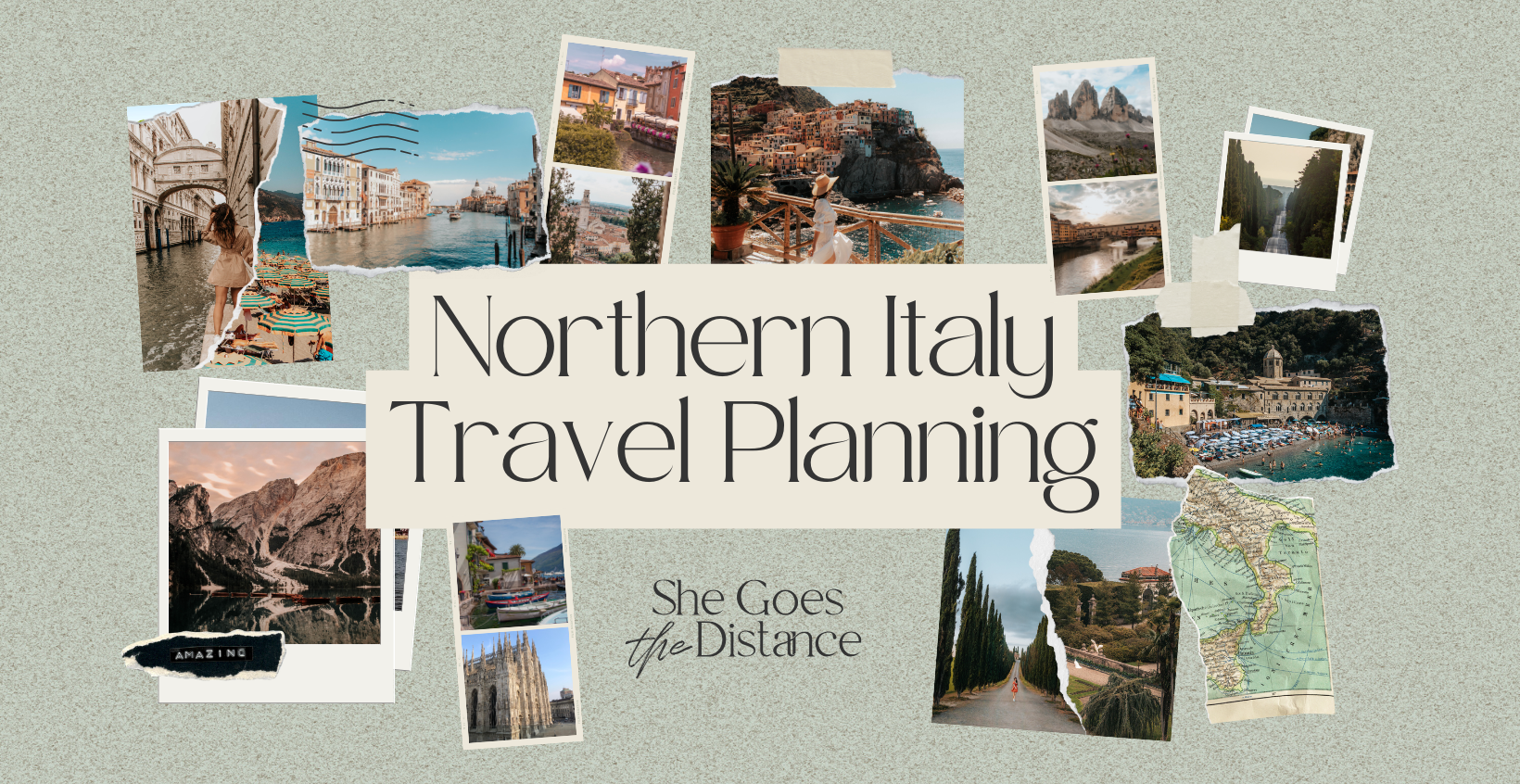

Hi Michela,
Today in a Lidl store close to the border with Bosnia and Herzegovina I noticed several coins lying there where customers put their groceries in the bags after paying the cashier. I assume it’s change left behind by the customers. Quickly peeking in the next booth I saw again a few coins lying around.
I’ve never seen this in other countries. Do you know if it’s something typical Croatian and maybe why people leave their change behind?
Hi Bram,
You know I actually never noticed that! It’s now been almost two years since I visited Croatia, so I totally could just not be remembering. It’s not really common to tip in Europe so I wouldn’t think they are leaving it as a tip. I honestly am not sure but would love to find out! Good observation!